¡Hola mis queridos Hivers! Hoy quiero unirme a la propuesta de la comunidad sobre “Materiales Naturales” y deseo hacerlo compartiendo uno de mis recuerdos más agradables con mi papá, pues él me enseñó una manualidad siendo una niña pequeña, se trata de un colgante de delfín a partir de una semilla. Por supuesto, este trabajo tendrá mi toque personal y actualizado, pero desde ya me siento muy agradecida con la comunidad por permitirme conectar con ello.
Hello my dear Hivers! Today I want to join the community's proposal on “Natural Materials” and I want to do it by sharing one of my fondest memories with my dad, as he taught me a craft when I was a little girl, it is a dolphin charm from a seed. Of course, this work will have my personal and updated touch, but I am very grateful to the community for allowing me to connect with it.
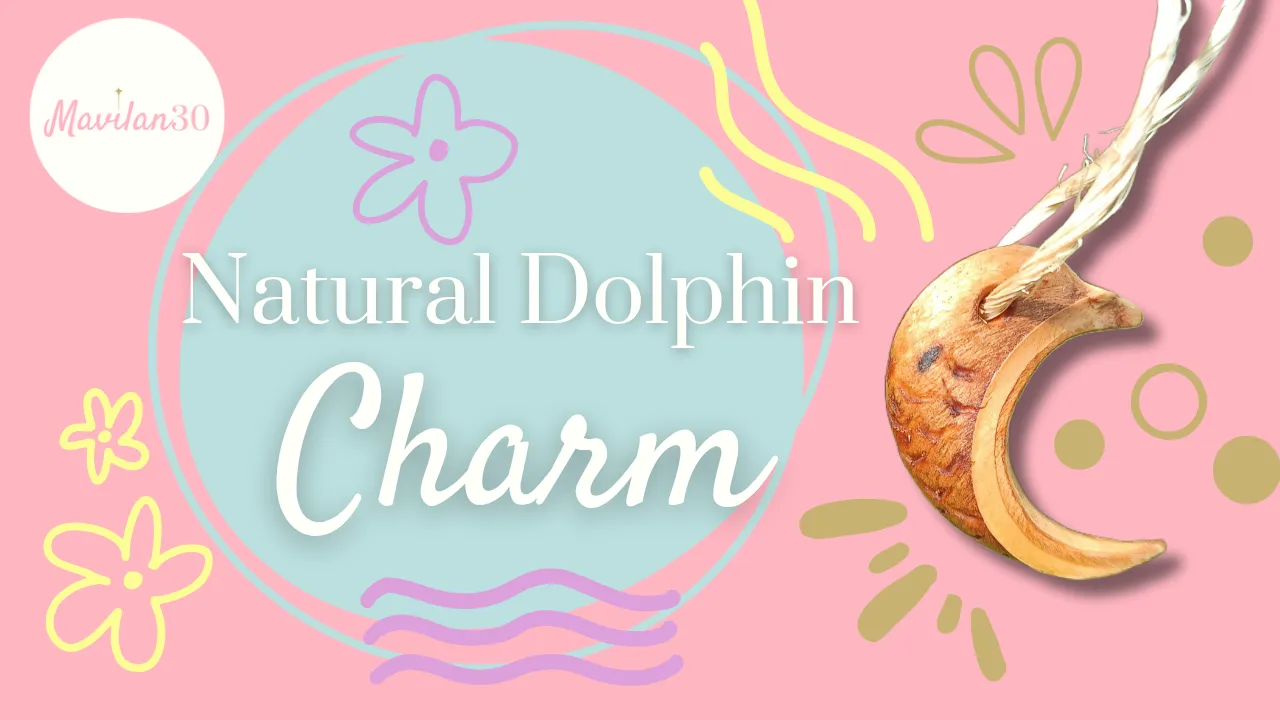
Imagen creada por mí en Canva / Image created by me in Canva
Materiales:
- Semilla del árbol de Jabillo
- Cúter
- Dremel
- Café
- Aceite vegetal
- Cabuya
- Lápiz de grafito
- Trozo de tela
- Liga/cinta/cuerda
Procedimiento:
Todo inicia con la semilla del árbol de Jabillo, como pueden ver, naturalmente se asemeja a la forma de un delfín.
Materials:
- Jabillo tree seed
- Cutter
- Dremel
- Coffee
- Vegetable oil
- Cabuya
- Graphite pencil
- Piece of cloth
- Ribbon/ribbon/string
Procedure:
It all starts with the Jabillo tree seed, as you can see, it naturally resembles the shape of a dolphin.
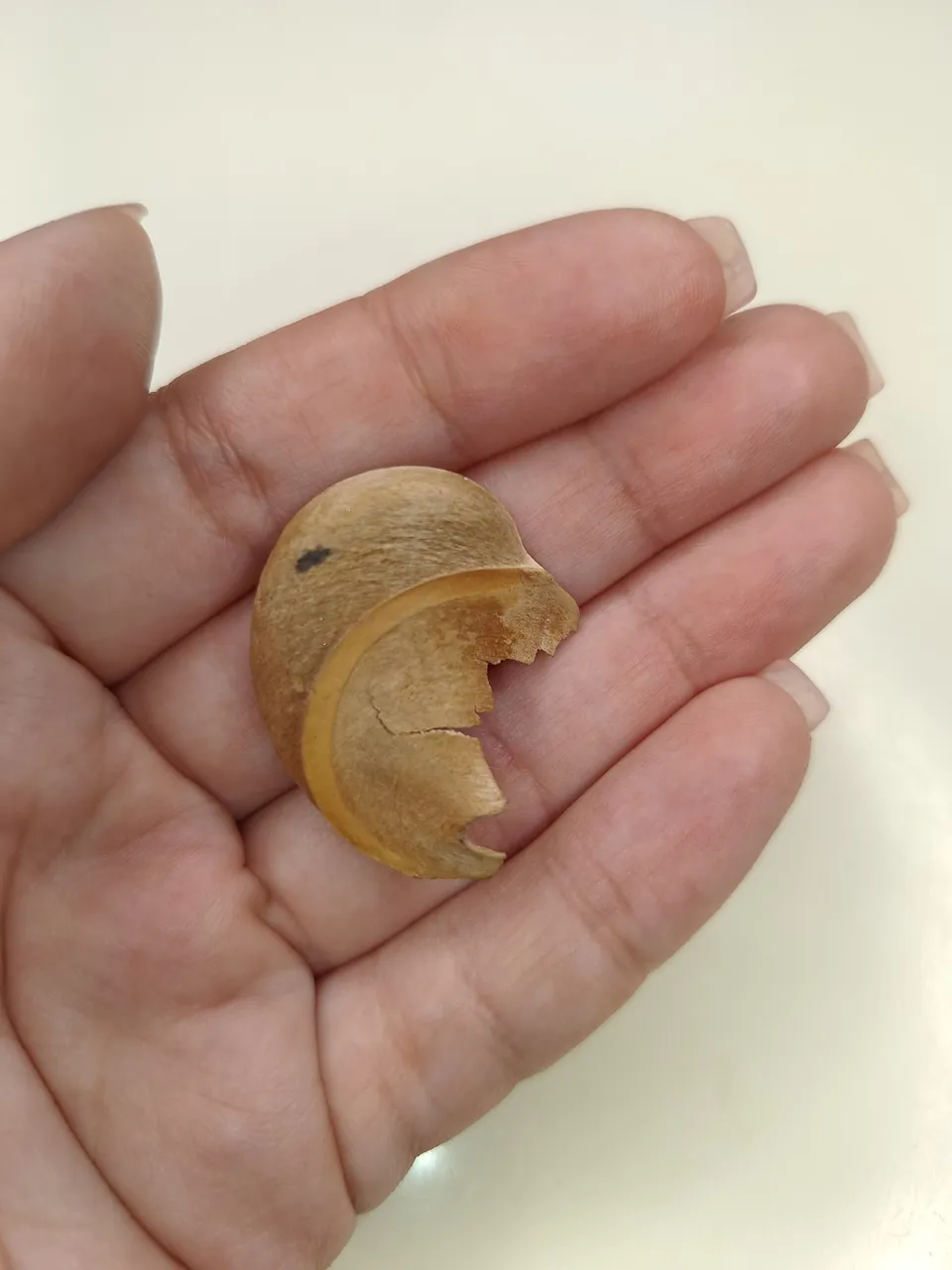
Semilla de Jabillo / Jabillo Seed
Con ayuda del cúter retiraremos el exceso de material mas fino dejándolo lo más cerca posible a la forma curva principal. Luego, con el dremel y una broca gruesa terminaremos de retirar y dejaremos un acabado bonito y pulido. Este paso también puede hacerse con alguna lima o lija.
With the help of the cutter we will remove the excess of thinner material leaving it as close as possible to the main curved shape. Then, with the dremel and a coarse bit we will finish removing and leave a nice polished finish. This step can also be done with a file or sandpaper.
 | 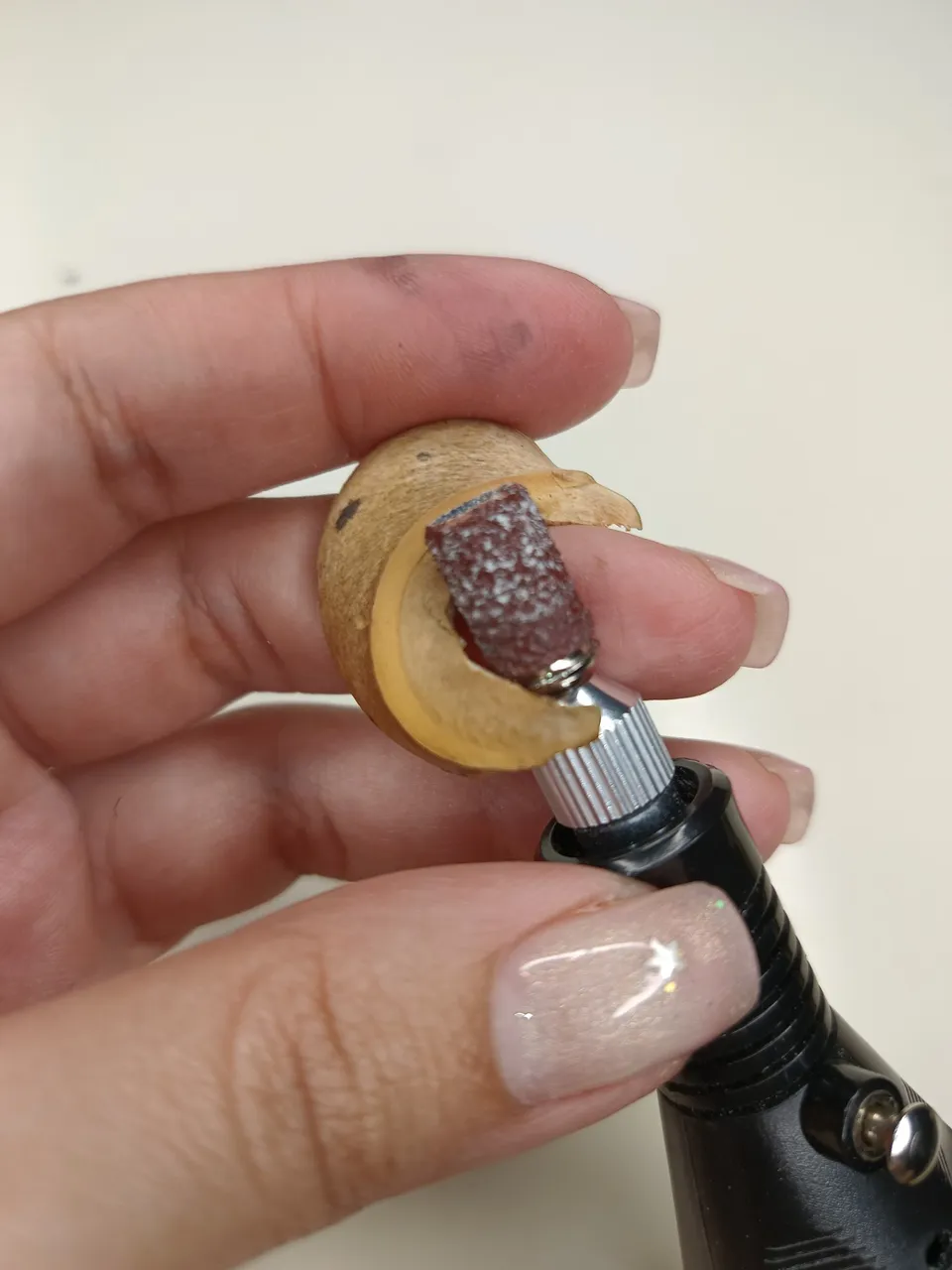 |
|---|
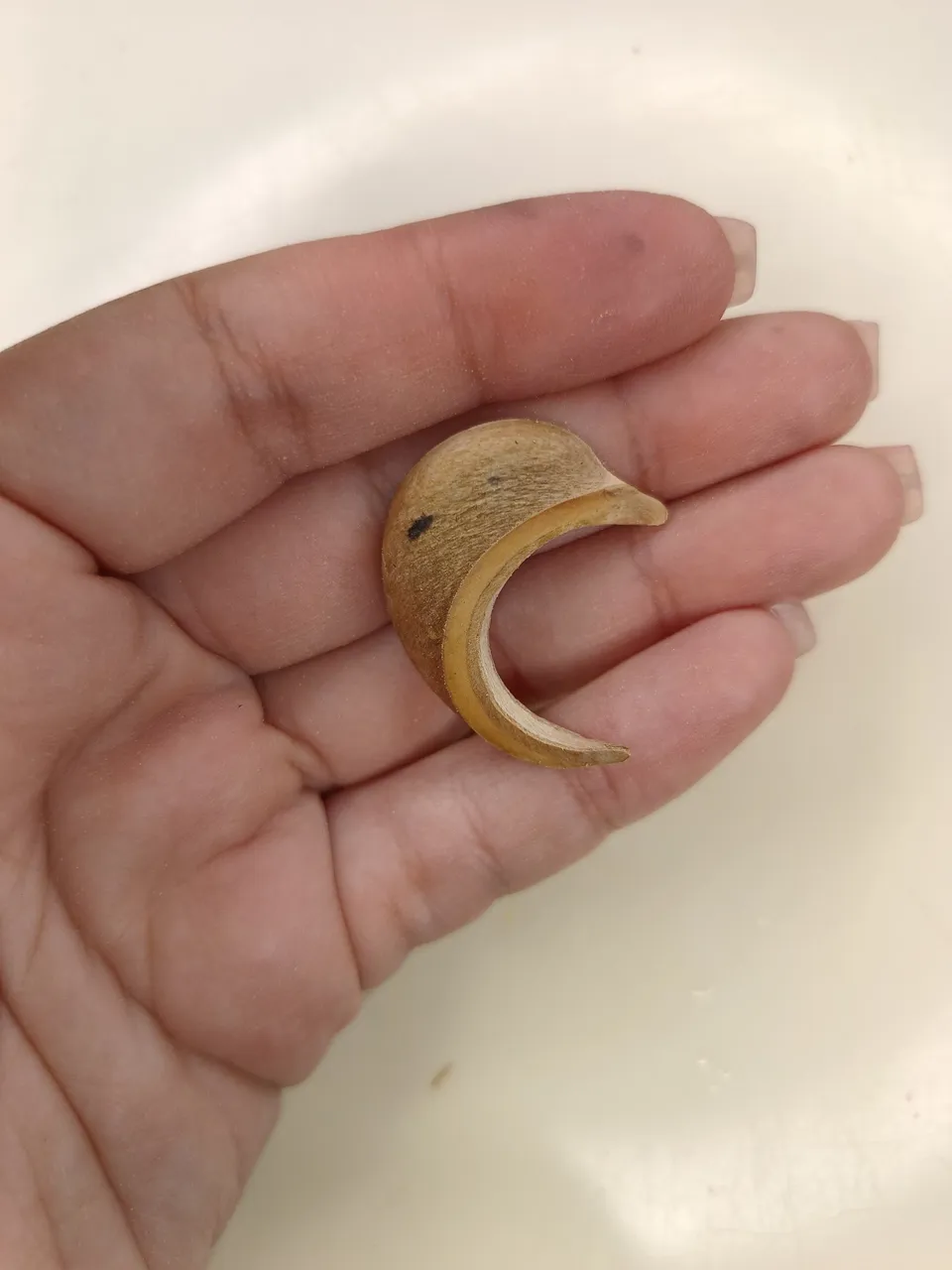
Retirando exceso / Removing excess
Ahora tomaremos el lápiz de grafito para demarcar las texturas que deseemos agregar, en mi caso, marqué el punto donde quería realizar el agujero para poder colgarlo y también dibujé una especie de escamas para hacerlo más interesante visualmente, recordemos que este es un diseño totalmente de fantasía.
Now we will take the graphite pencil to demarcate the textures we want to add, in my case, I marked the point where I wanted to make the hole to be able to hang it and I also drew a kind of scales to make it more visually interesting, remember that this is a totally fantasy design.
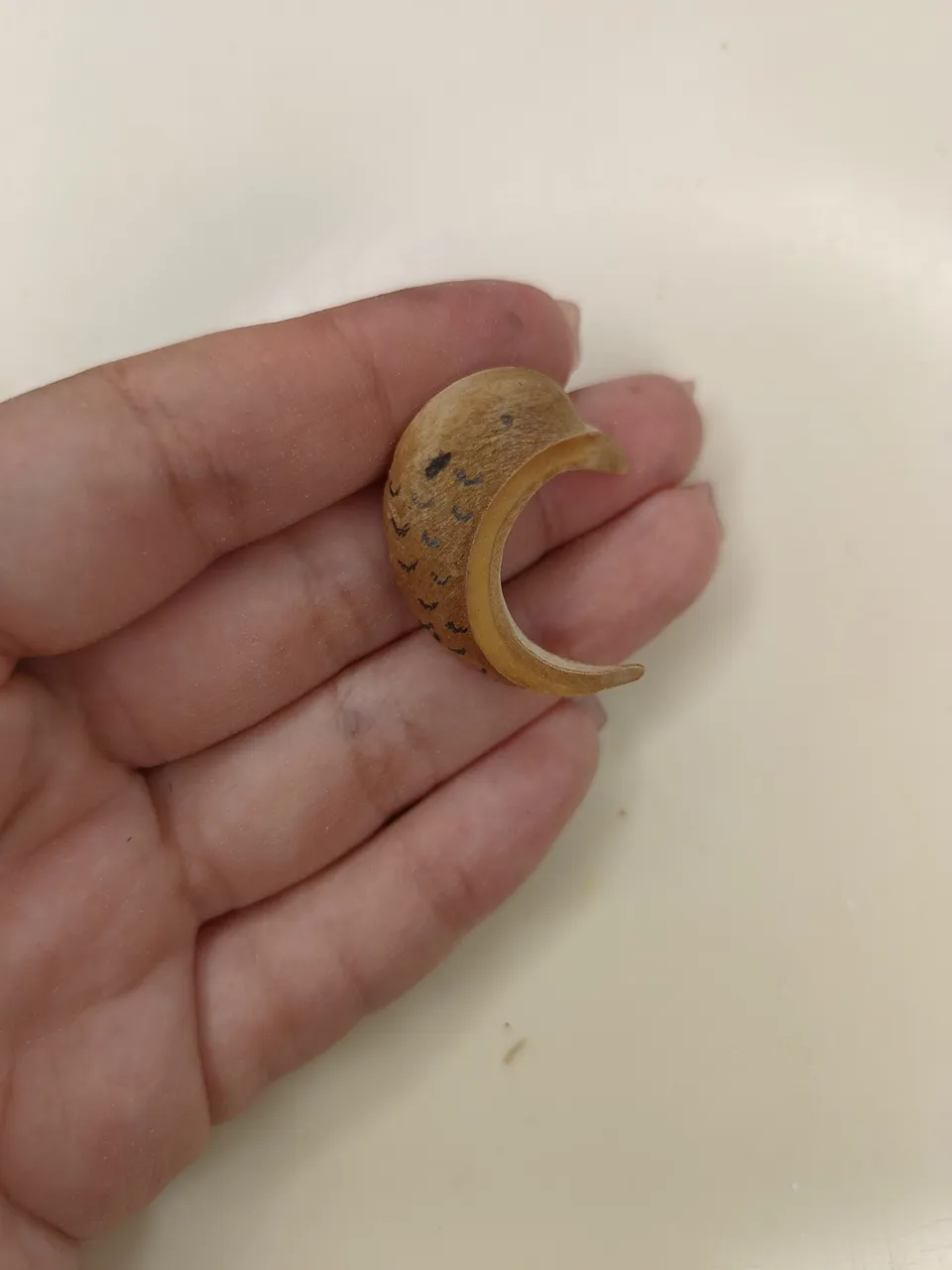
Dibujando el diseño / Drawing the design
Con el cúter tallaremos un poco marcando las líneas que hemos dibujado previamente y posteriormente usaremos nuevamente el dremel pero con una broca delgada para perforar el agujero y dar profundidad a las escamas.
With the cutter we will carve a little bit marking the lines we have previously drawn and then we will use the dremel again but with a thin bit to drill the hole and give depth to the scales.
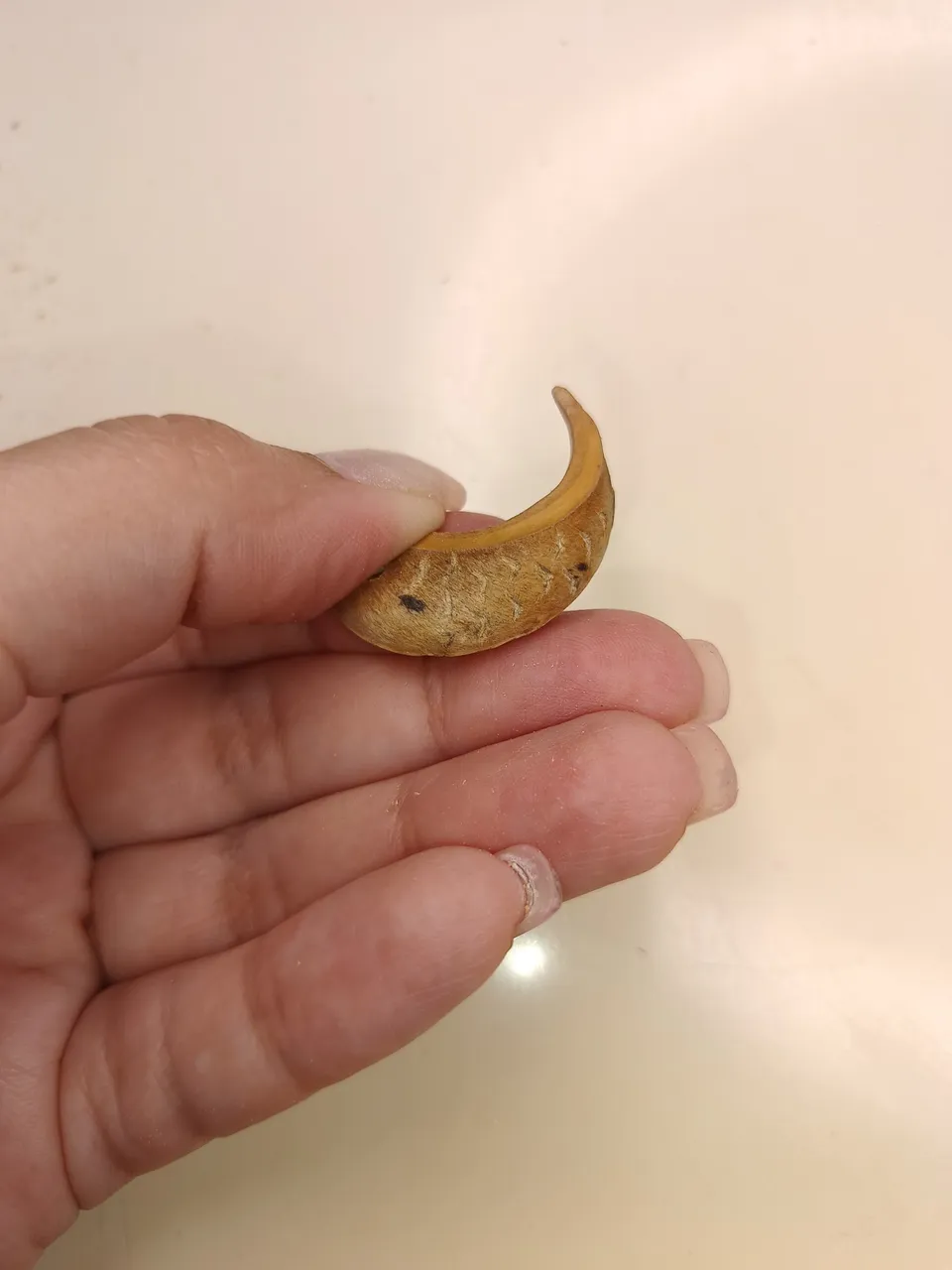 | 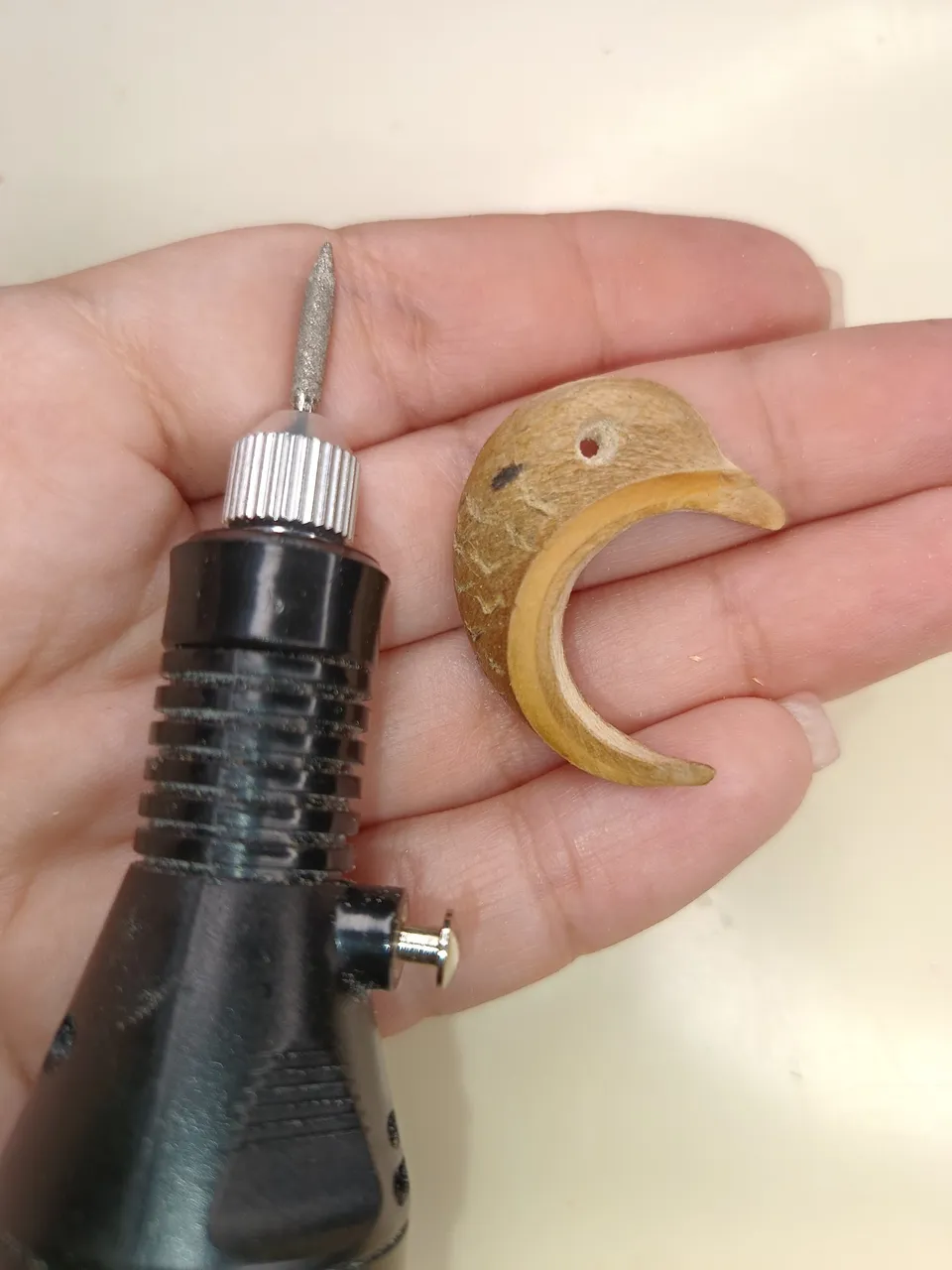 |
|---|
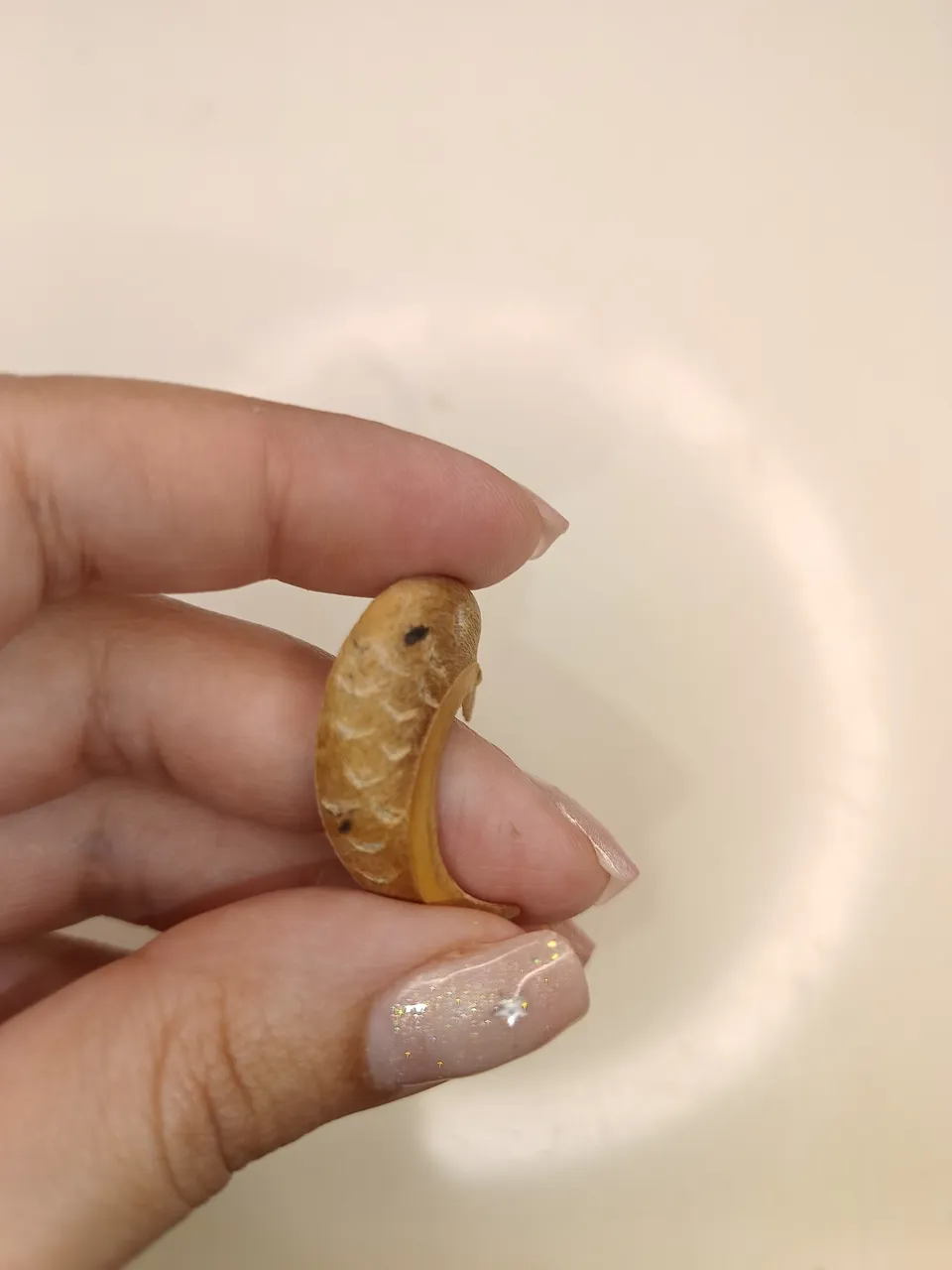
Tallando detalles / Carving details
Para poder pintar nuestro delfín y así resaltar las texturas he decidido también hacerlo de la forma más natural posible, por lo que tomaremos un trozo de tela, colocaremos café en su centro y cerraremos con una liga de cabello.
In order to paint our dolphin and thus highlight the textures I have also decided to do it in the most natural way possible, so we will take a piece of fabric, place coffee in its center and close it with a hair tie.
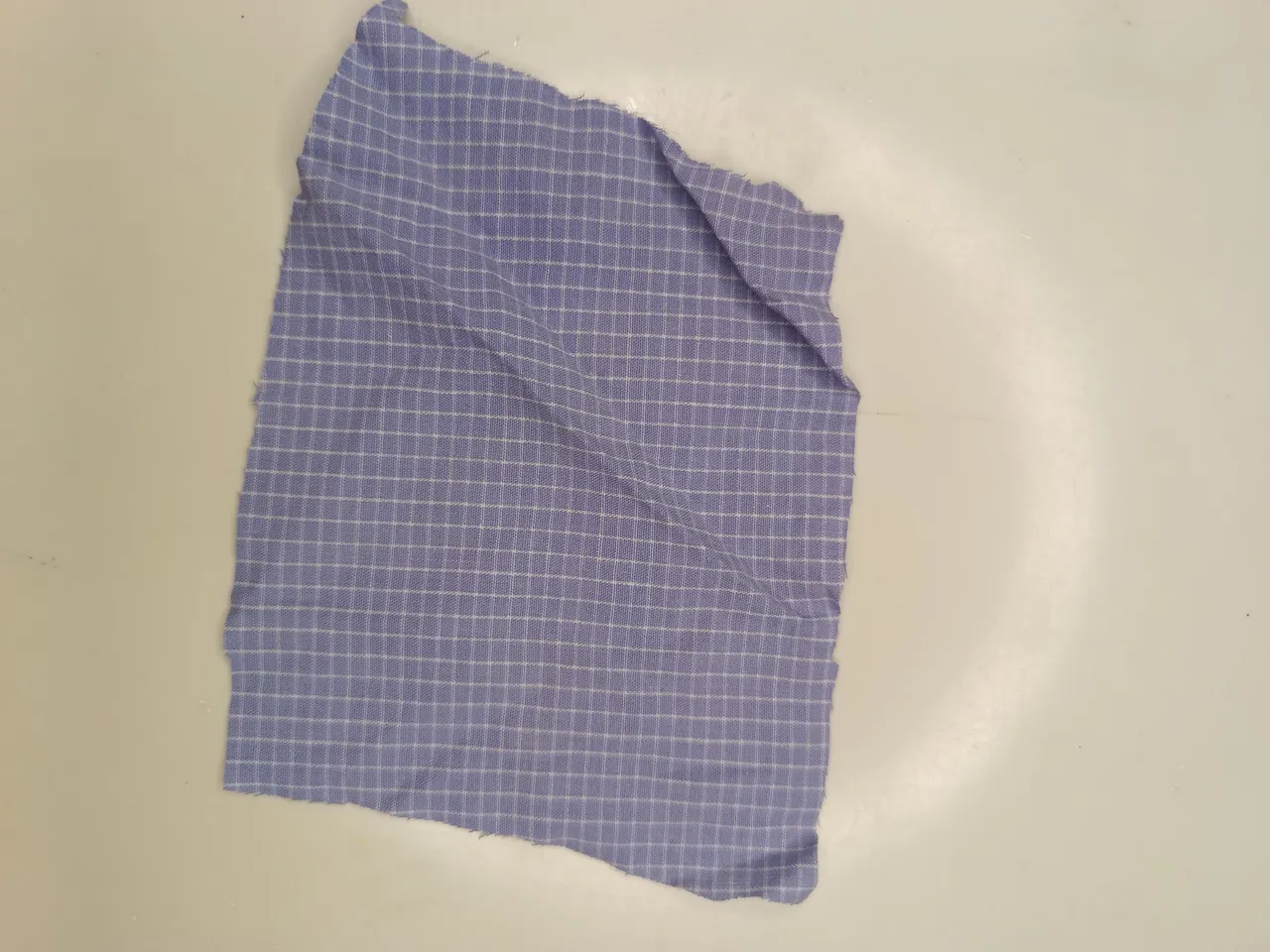 | 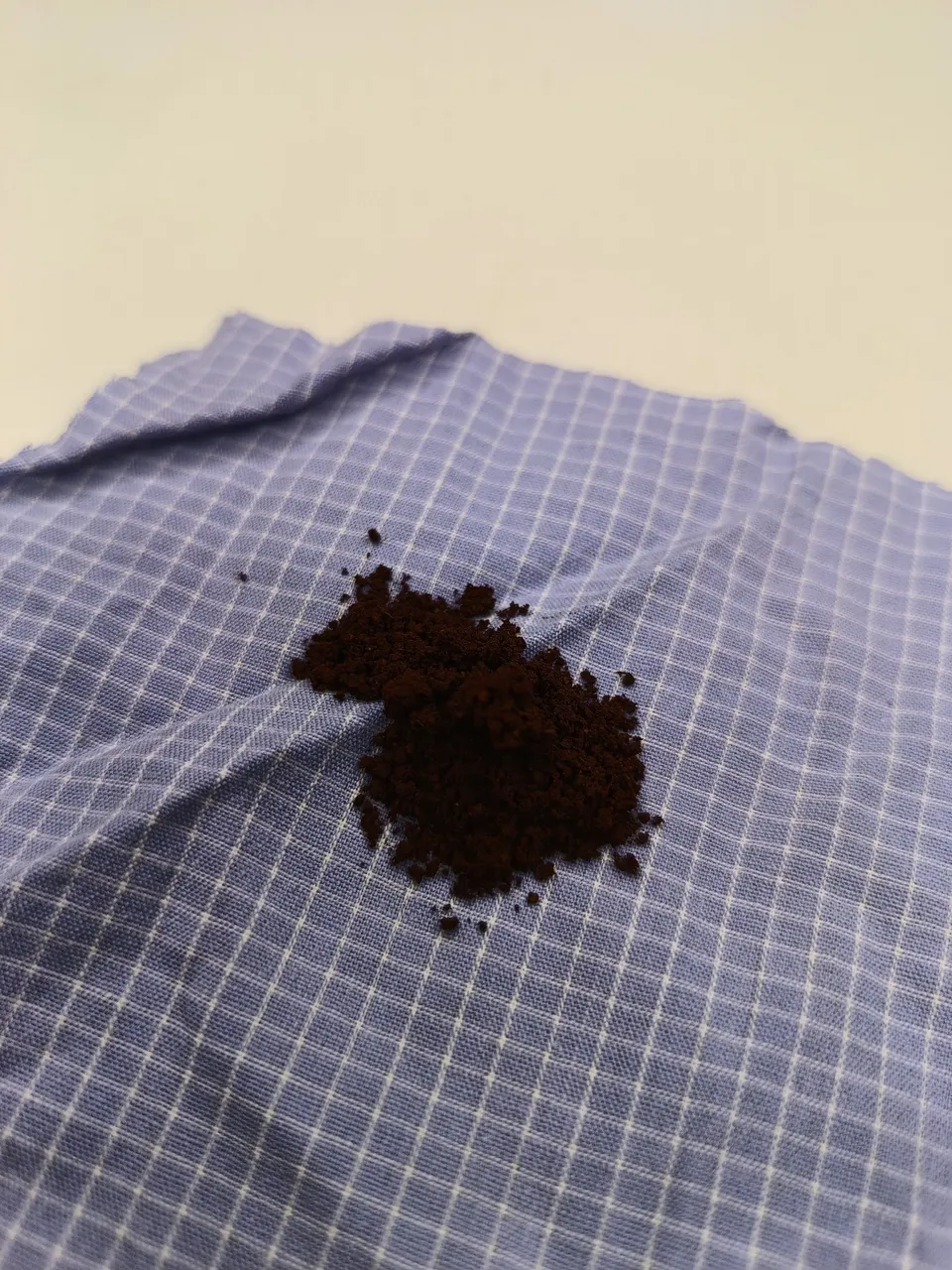 |
|---|
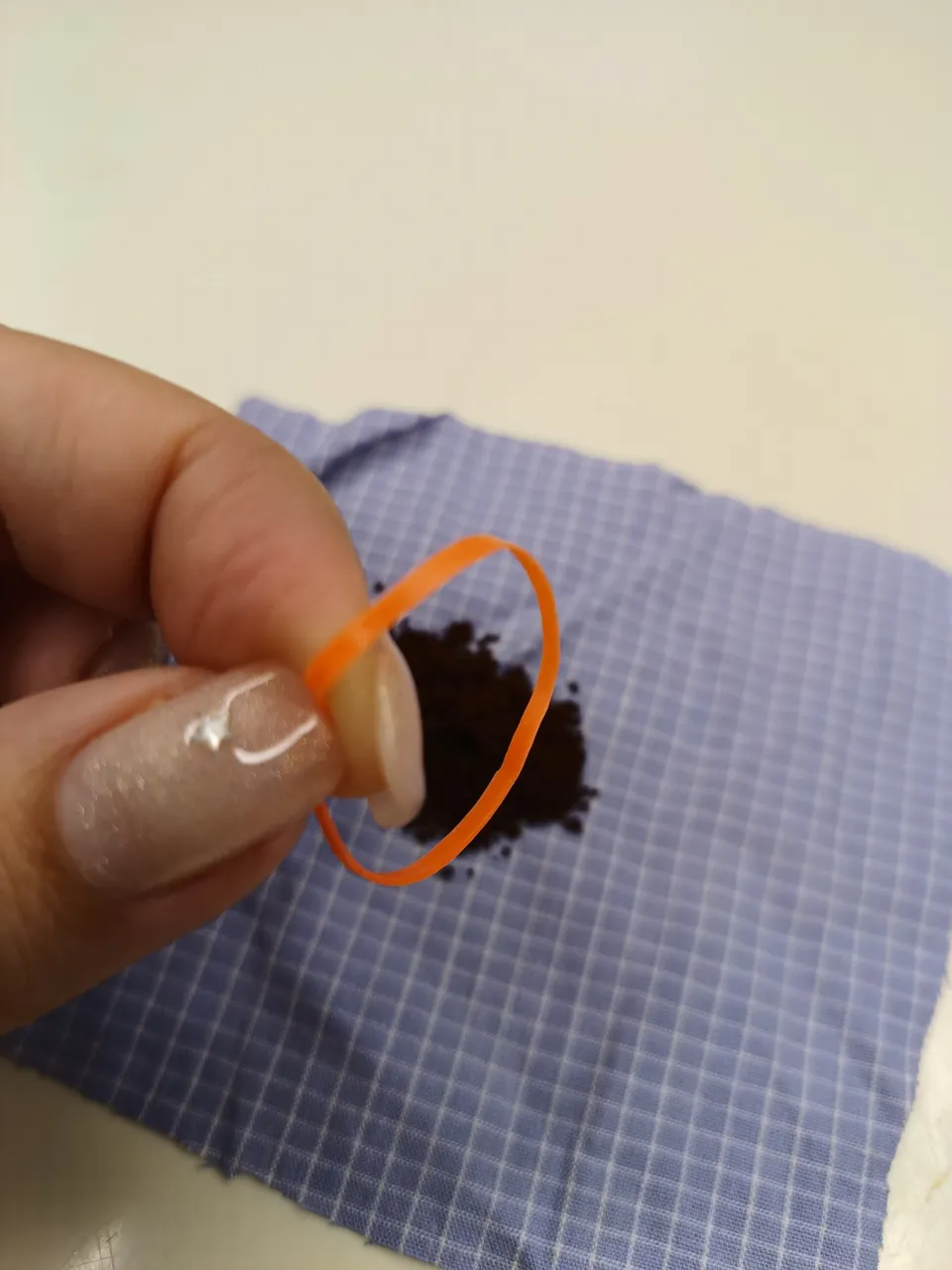 | 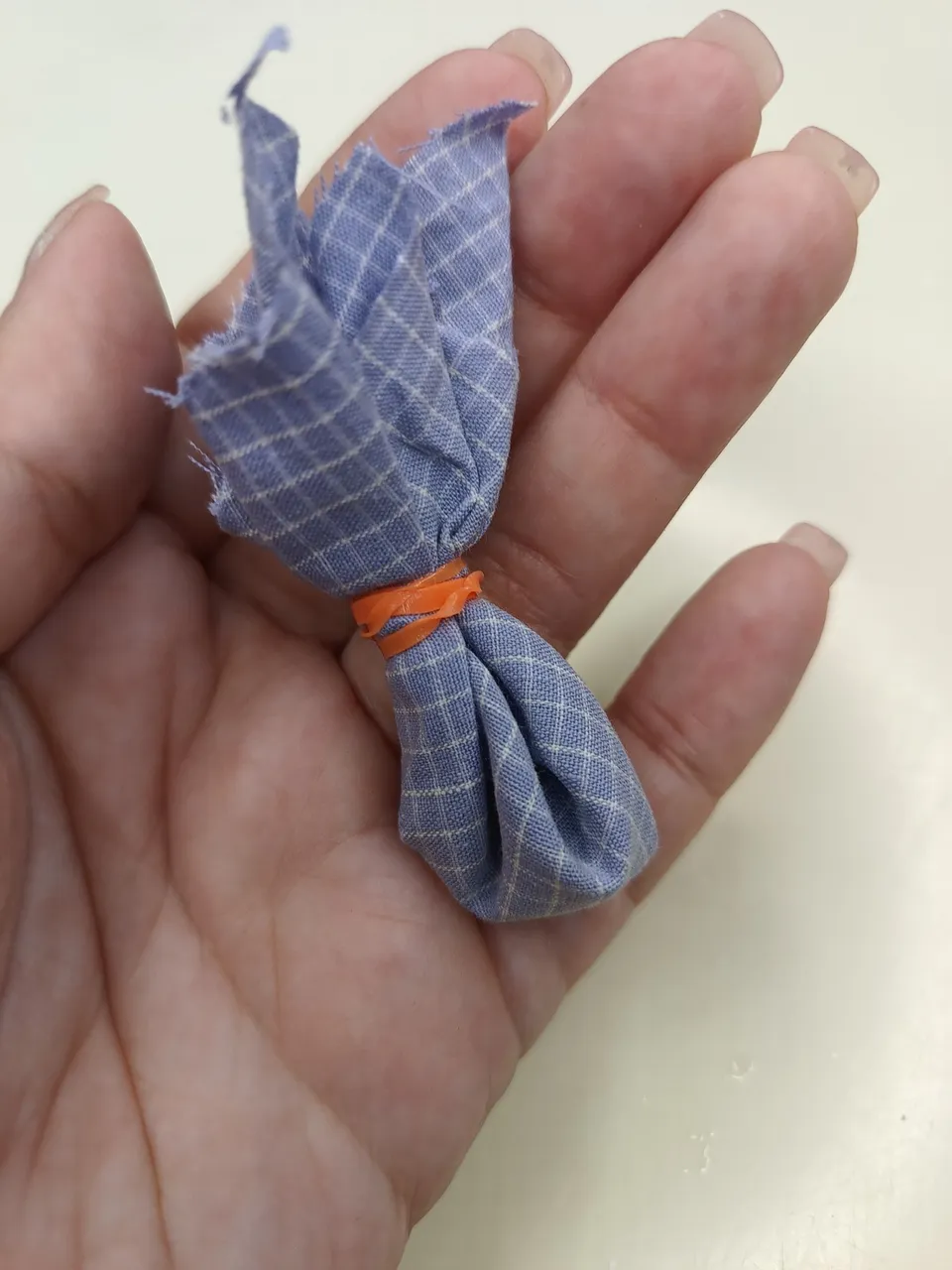 |
|---|
En un vasito añadiremos un poco de aceite vegetal y allí dejaremos que la bolsita de café. Luego de un rato, podemos moverla y presionarla un poco contra las paredes y el fondo del recipiente y veremos como va saliendo el color (¡un tono café hermoso por cierto!).
In a small glass we will add a little vegetable oil and let the coffee sachet sit there. After a while, we can move it and press it a little against the walls and the bottom of the container and we will see how the color comes out (a beautiful brown tone by the way!).
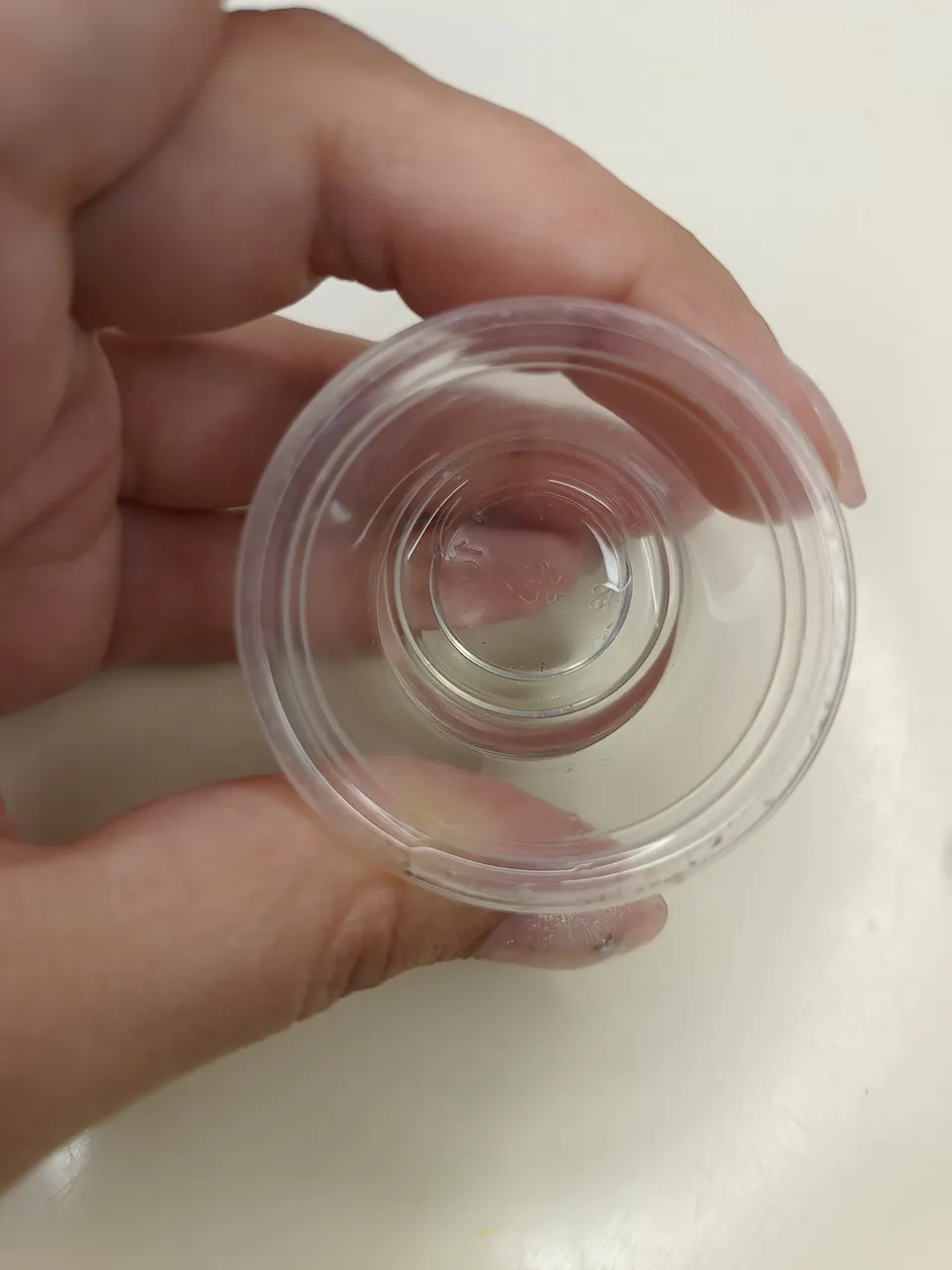 | 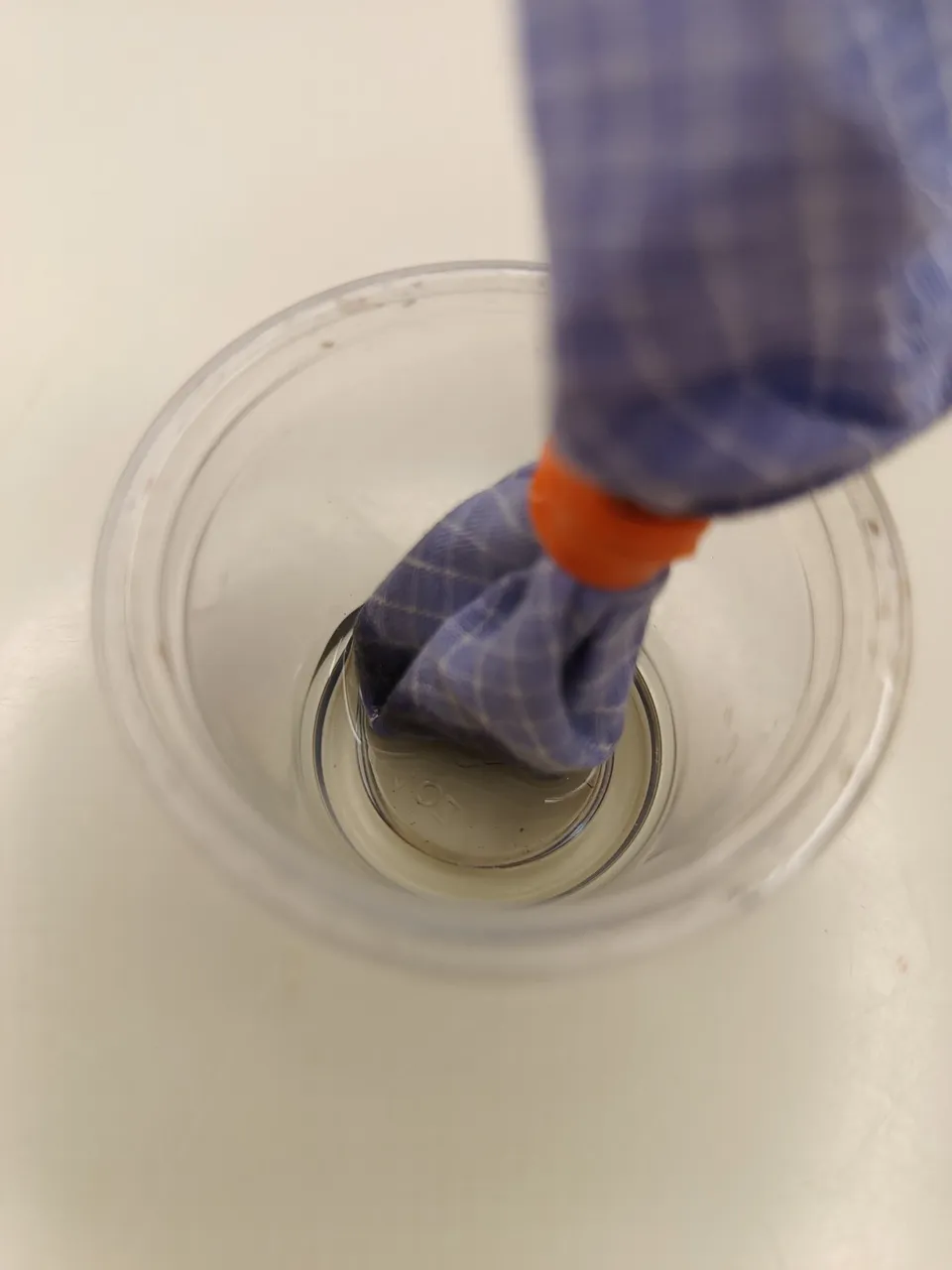 |
|---|

Obteniendo pigmento / Obtaining pigment
Cuando consideremos que ya está listo nuestro pigmento, solo quedará presionar la bolsita sobre la superficie del delfín como si se tratase de una esponja y veremos como va adquiriendo el color. Dejamos que el material absorba el pigmento y podemos aplicar todas las capas que consideremos necesarias, yo hice unas tres. Al finalizar, retiramos cualquier exceso y dejamos secar totalmente.
When we consider that our pigment is ready, we only need to press the sachet on the surface of the dolphin as if it were a sponge and we will see how it acquires the color. We let the material absorb the pigment and we can apply as many layers as we consider necessary, I did about three. At the end, we remove any excess and let it dry completely.
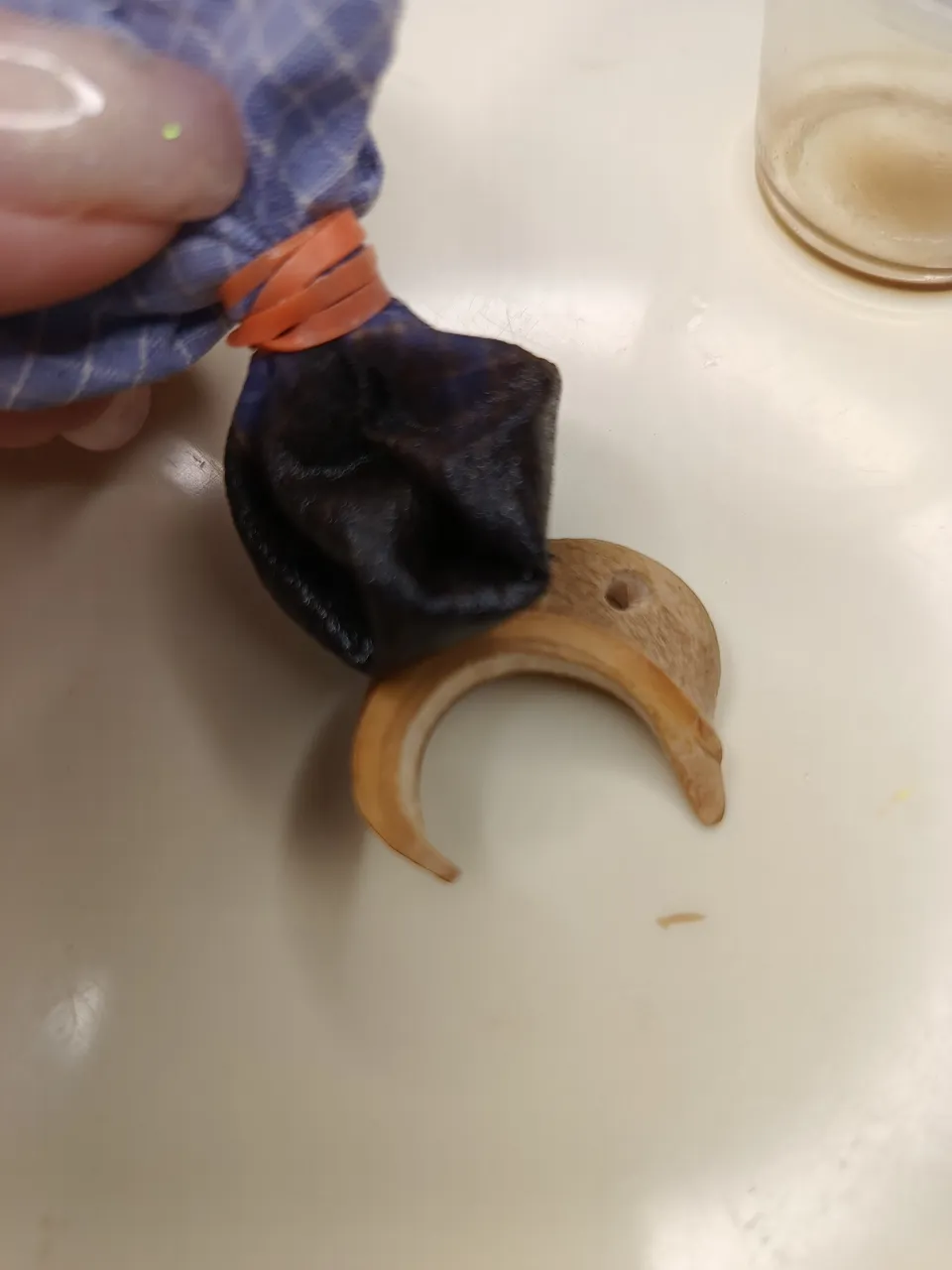 | 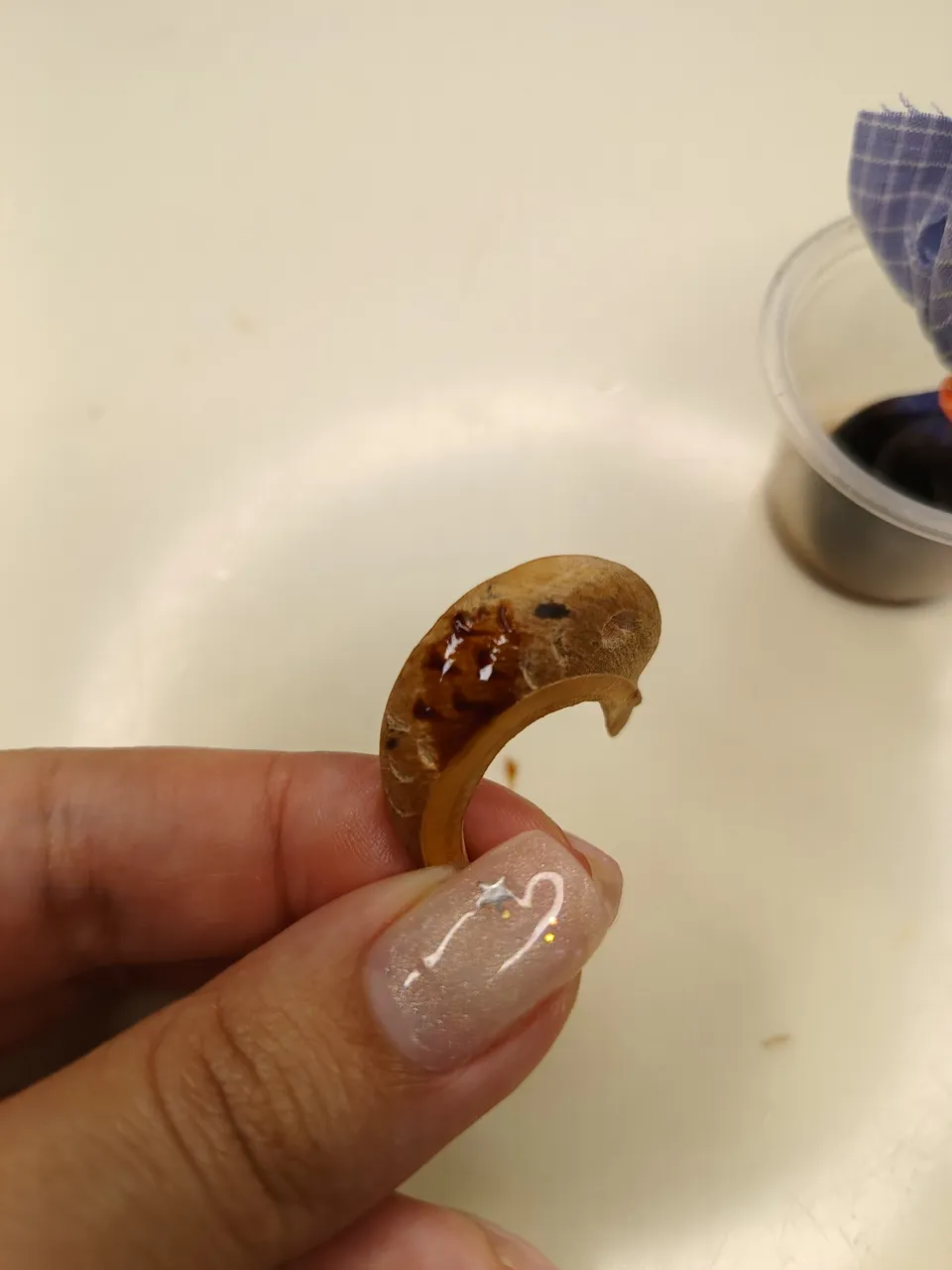 |
|---|
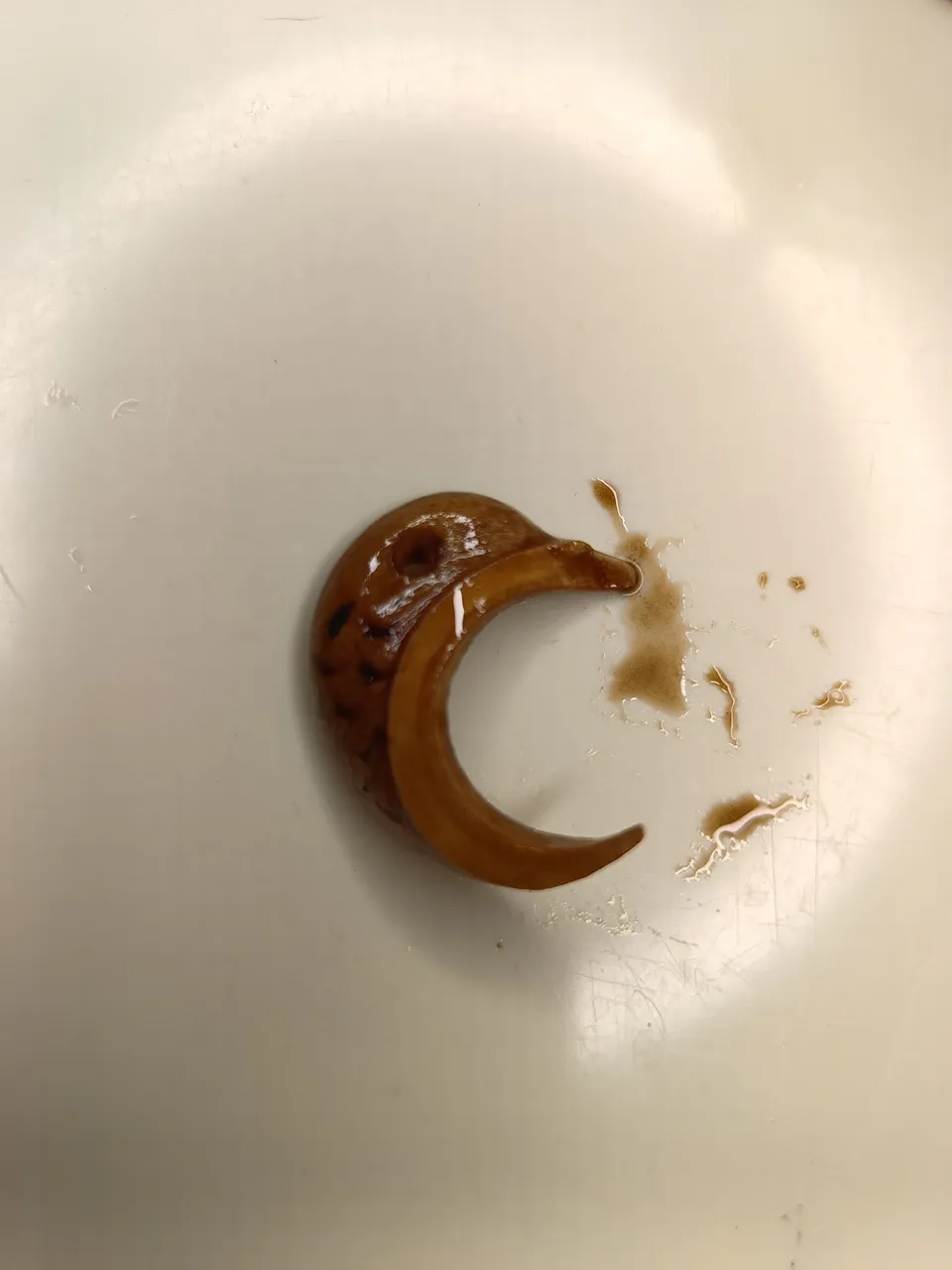
Pintando / Painting
Para terminar, necesitaremos un cordel que pasaremos por el agujero y lo anudaremos, este es para poderlo colgar de donde queramos, un bolso por ejemplo o como yo, que lo usaré de llavero. Para este propósito, de nuevo he querido elegir un elemento totalmente natural, así que utilicé cabuya.
To finish, we will need a string that we will pass through the hole and knot it, this is to be able to hang it wherever we want, a bag for example or like me, I will use it as a keychain. For this purpose, again I wanted to choose a totally natural element, so I used cabuya.
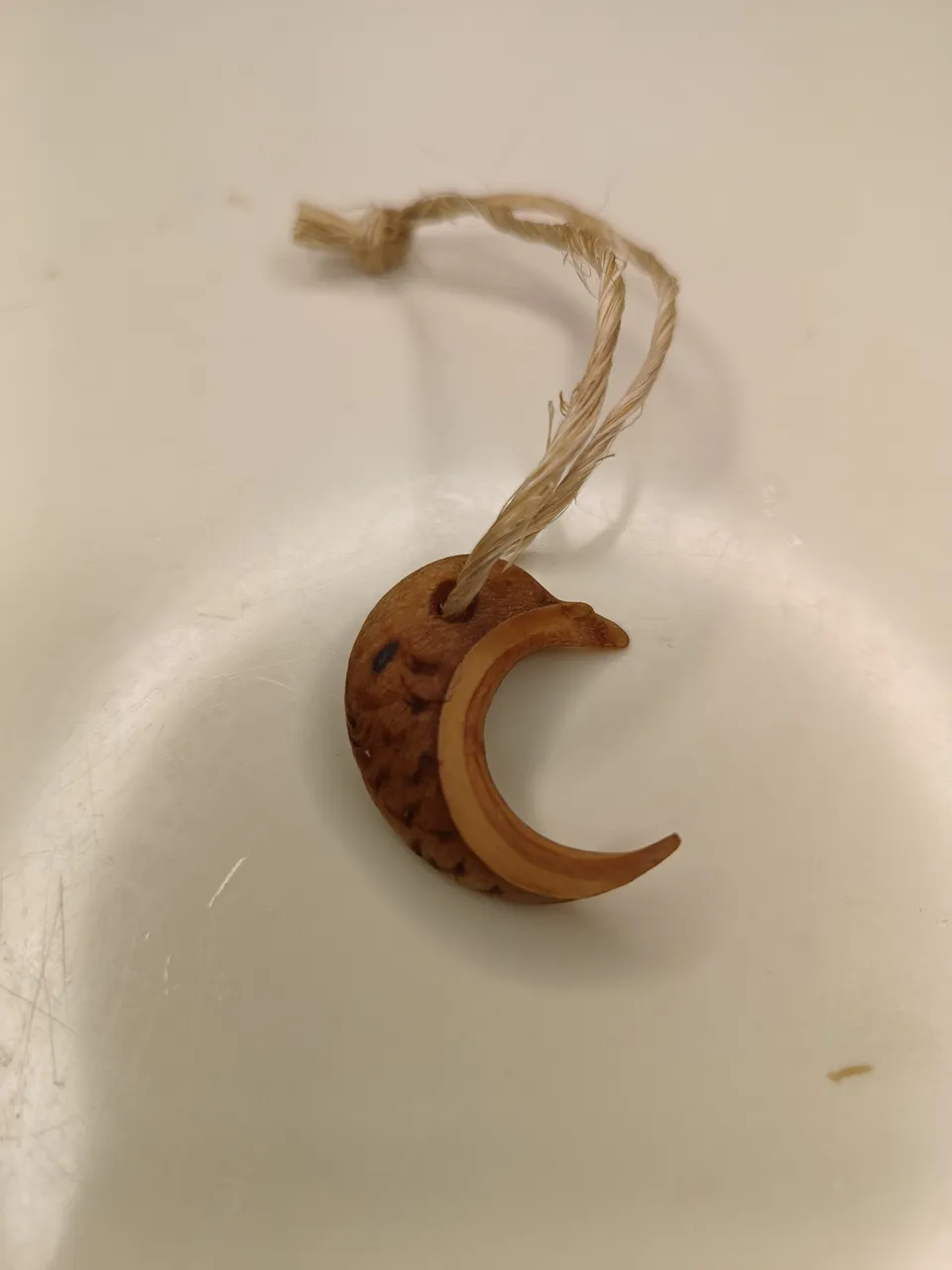 | 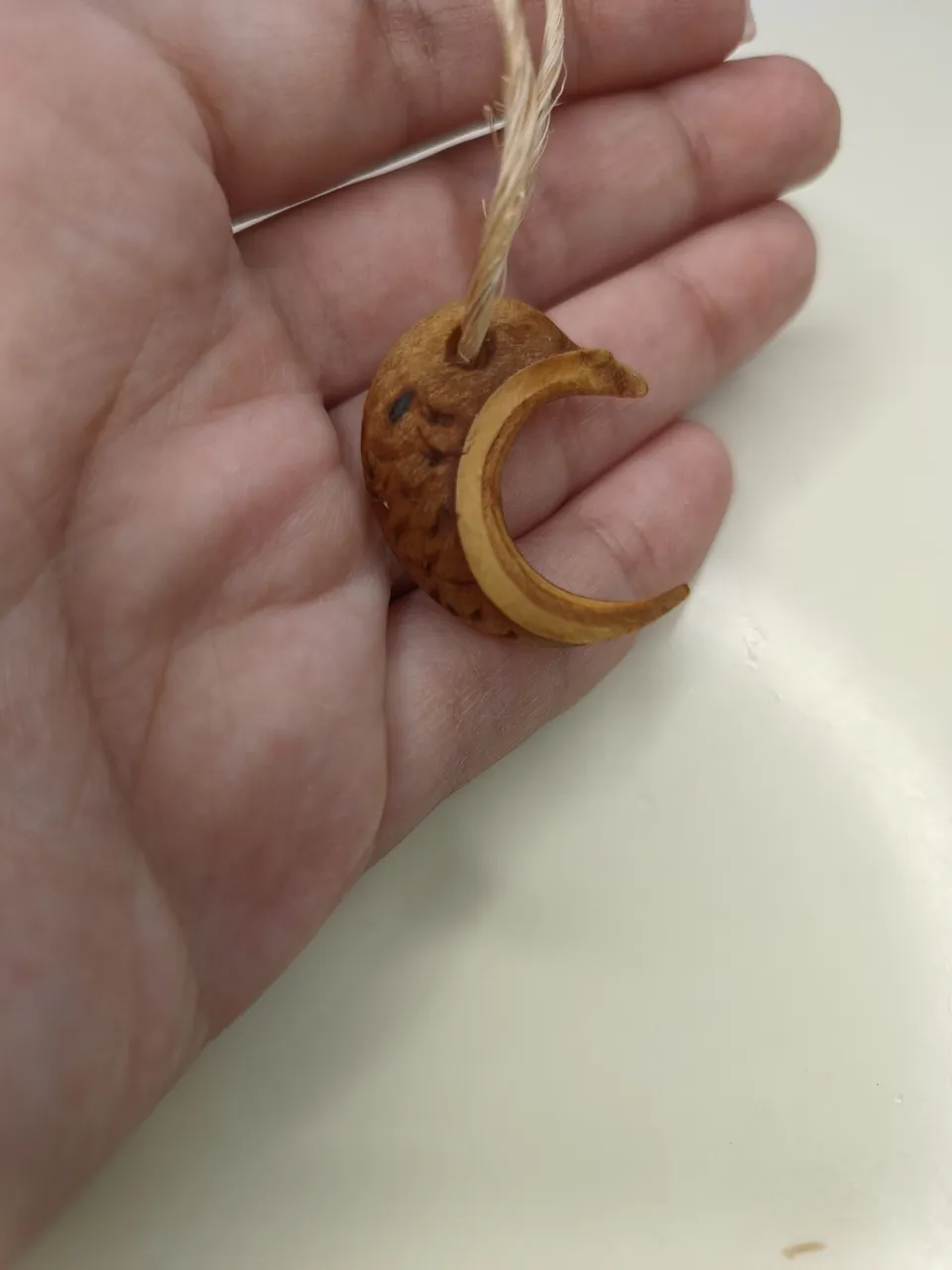 |
|---|
Y así se ve en la luz natural ¡Yo lo estoy amando demasiado! ¿Y tú?
And this is what it looks like in natural light I'm loving it too much! How about you?
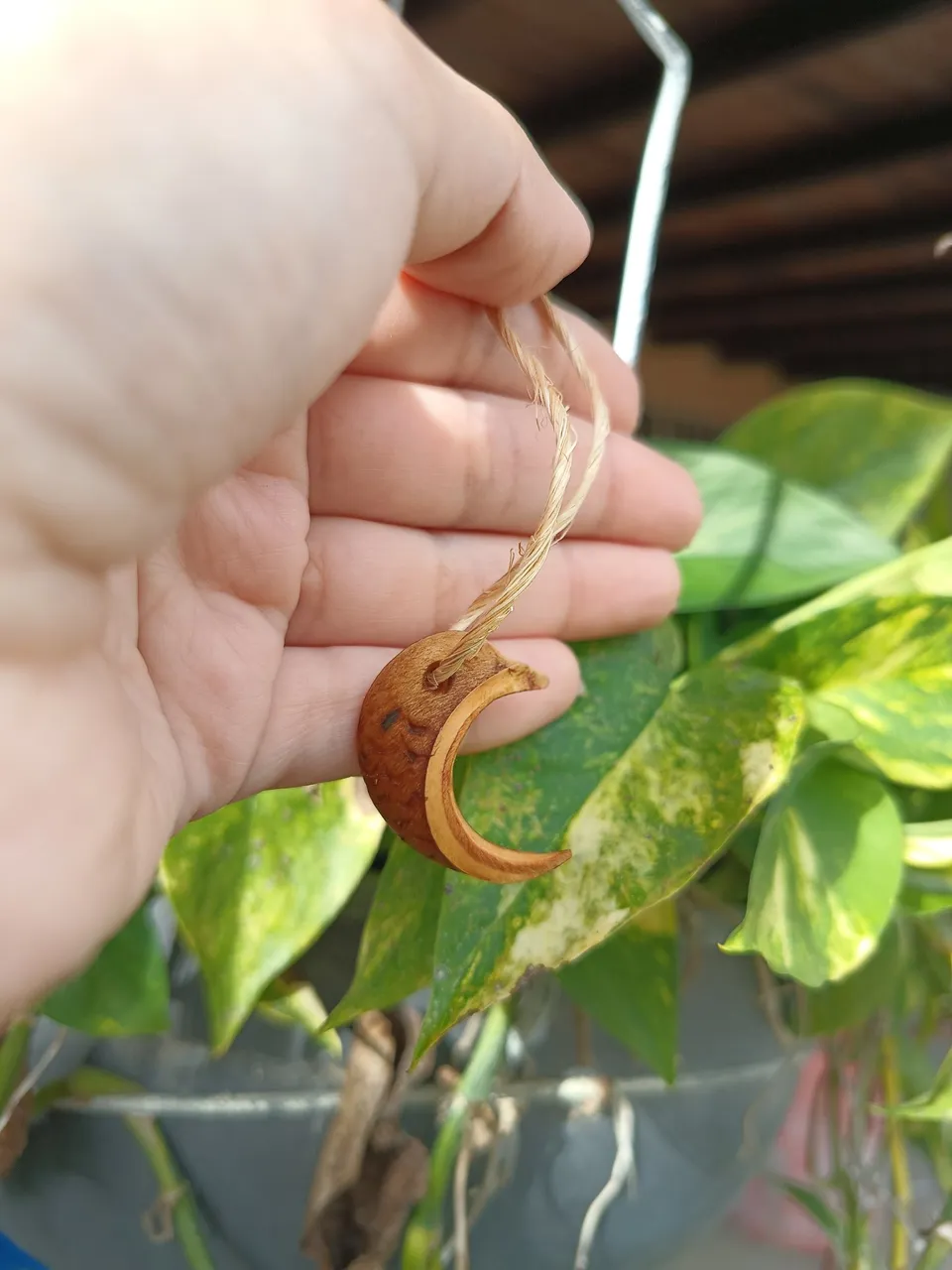 | 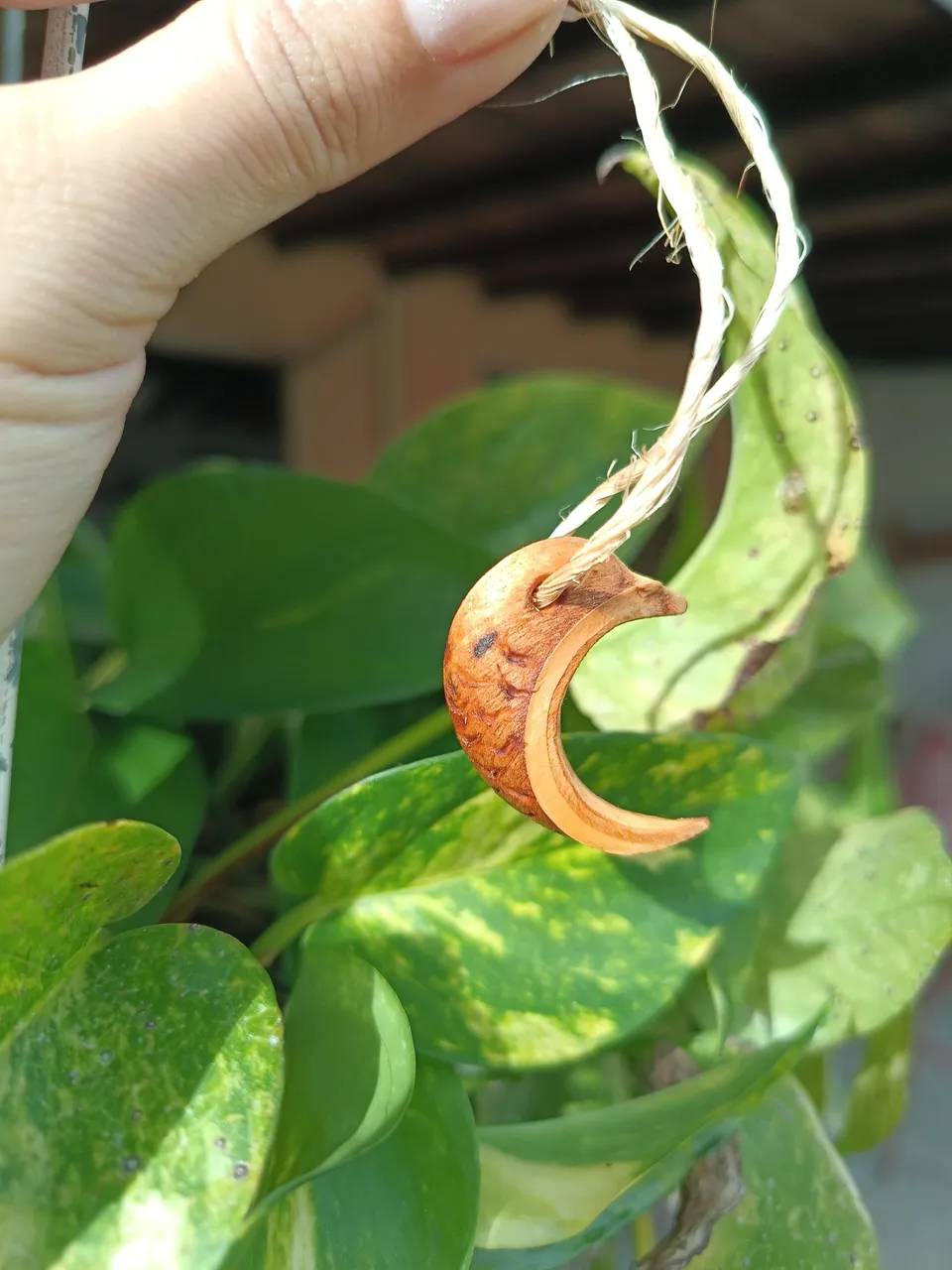 |
|---|
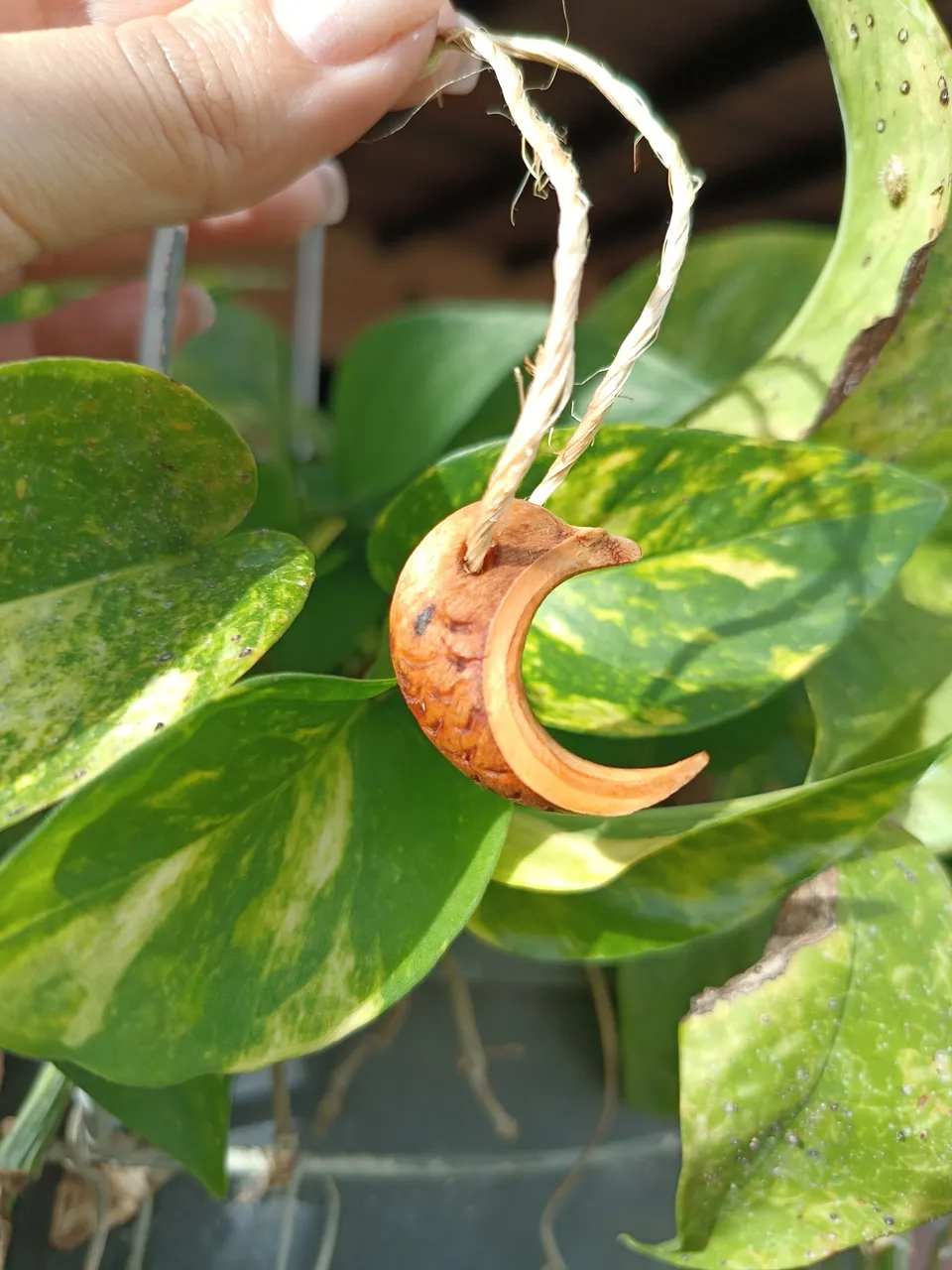
Resultado final / Final result
¡Muchas gracias por leerme!
Thank you so much for reading me!
Fotografías propias, tomadas con mi Motorola g72.
Traducido al inglés con DeepL.
Own photographs, taken with my Motorola g72.
Translated to English with DeepL.
